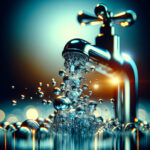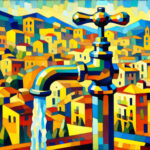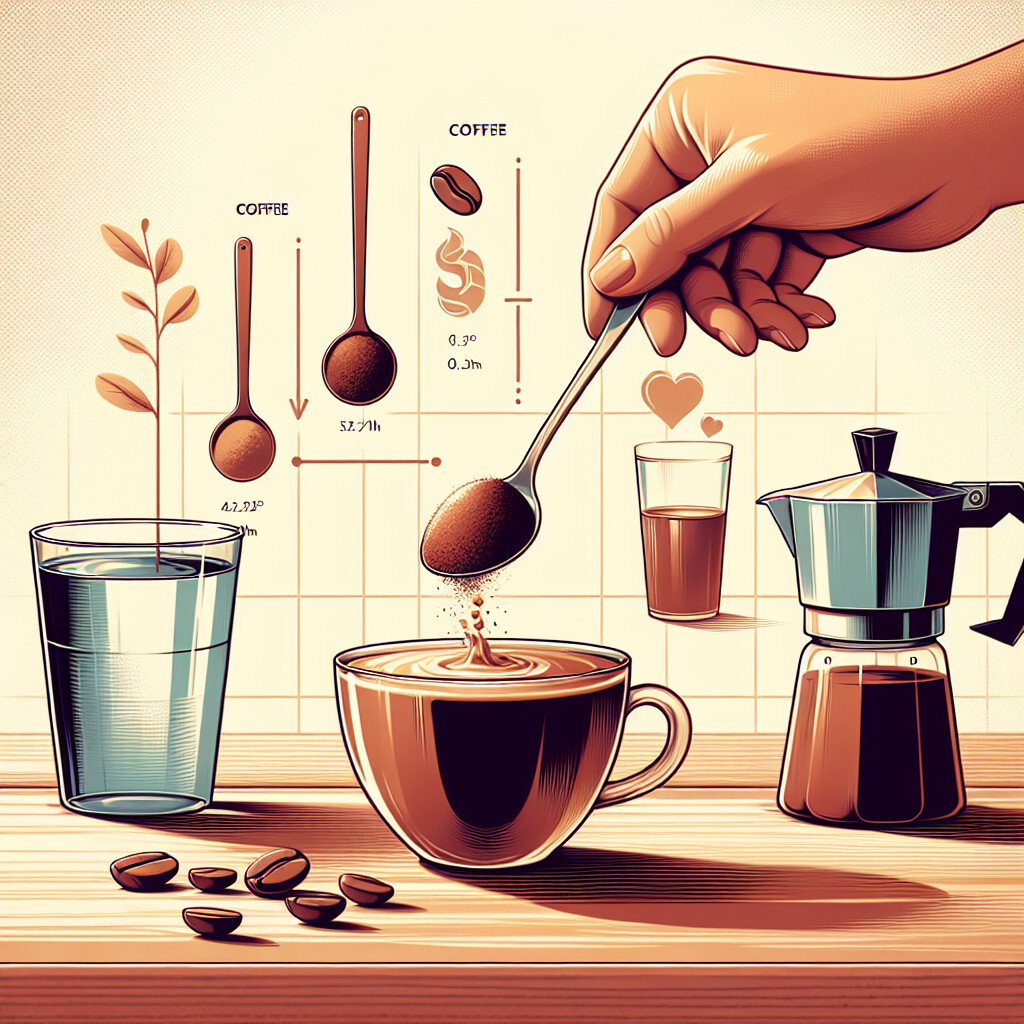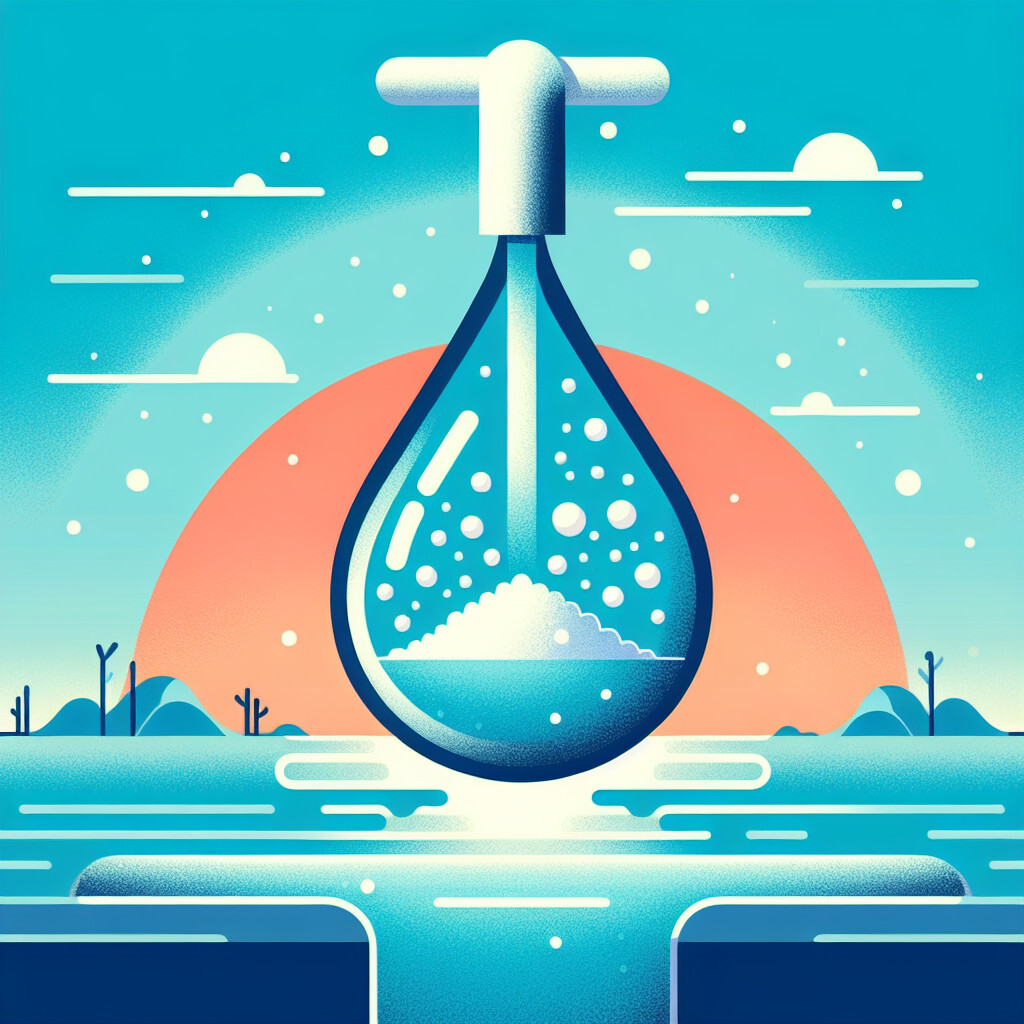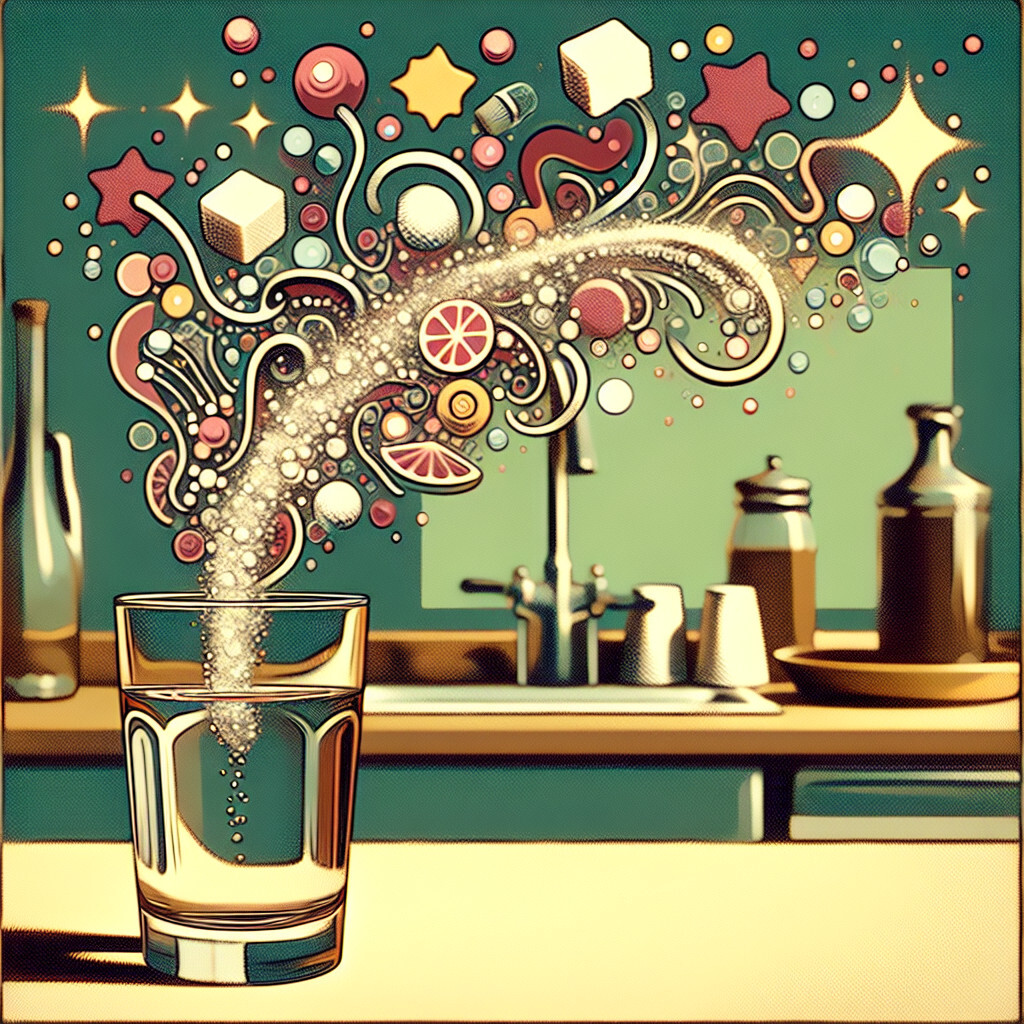-
Table of Contents
“Italy’s Tap Water: Refreshingly Pure, Safe, and Delicious!”
Introduction

The tap water in Italy is generally safe and of high quality. The country’s water supply system is well-regulated, ensuring that the water is treated and tested for any harmful substances. However, the taste and hardness of the water can vary significantly from region to region due to the different sources and treatment processes. In some areas, particularly in the south, locals prefer to drink bottled water due to the taste of the tap water.
Understanding the Quality of Tap Water in Italy
Italy, renowned for its rich history, picturesque landscapes, and delectable cuisine, also boasts of high-quality tap water. The quality of tap water in Italy is a topic of interest for many, particularly tourists who are accustomed to purchasing bottled water in their home countries. Understanding the quality of tap water in Italy is essential for both residents and visitors alike, as it directly impacts health and well-being.
In general, the tap water in Italy is safe to drink. The country has stringent regulations in place to ensure the safety and quality of its public water supply. The Italian Ministry of Health oversees the monitoring of water quality, conducting regular checks for any potential contaminants. These checks are comprehensive, testing for a wide range of substances including bacteria, viruses, chemicals, and heavy metals. The results of these tests are publicly available, providing transparency and reassurance to the public about the safety of their tap water.
However, the quality of tap water can vary from region to region. In major cities like Rome, Milan, and Florence, the tap water is not only safe to drink but is also of excellent quality. These cities have advanced water treatment facilities that ensure the water is thoroughly purified before it reaches the taps. In fact, Rome’s tap water comes from the same ancient source that has been supplying the city for over two thousand years, the fresh springs of the Apennine Mountains.
On the other hand, in some rural areas and islands, the quality of tap water may not be as high due to less advanced water infrastructure. In these areas, locals and tourists often prefer to drink bottled water. However, this does not necessarily mean that the tap water is unsafe. It may simply be that the taste or hardness of the water is not to everyone’s liking.
Despite the overall high quality of tap water in Italy, many Italians prefer to drink bottled water. This preference is largely cultural and dates back to times when the quality of tap water was not as reliable. Today, Italy has one of the highest consumptions of bottled water in the world. This preference for bottled water is also reflected in the country’s numerous bottled water brands, many of which are exported around the world.
However, there is a growing movement in Italy to encourage people to drink tap water. This is driven by environmental concerns, as the production and disposal of plastic water bottles contribute significantly to pollution and waste. Many restaurants now serve tap water, and in some cities, public water fountains that dispense still and sparkling water are available, encouraging people to refill their bottles.
In conclusion, the tap water in Italy is generally safe to drink and of high quality, particularly in the major cities. While the preference for bottled water remains strong, there are efforts to promote the consumption of tap water for environmental reasons. Whether you’re a resident or a visitor, understanding the quality of tap water in Italy can help you make informed decisions about your drinking water choices.
The Safety and Taste of Italy’s Tap Water
Italy, a country renowned for its rich history, stunning architecture, and delectable cuisine, also boasts an impressive reputation when it comes to the quality of its tap water. The safety and taste of Italy’s tap water are often subjects of interest for both locals and tourists alike. This article aims to provide an informative and formal discussion on these aspects.
Italy’s tap water is generally safe to drink. The country adheres to the European Union’s stringent water quality standards, which mandate regular testing and monitoring of water sources. These tests ensure that the water is free from harmful bacteria, viruses, and chemicals that could pose a risk to human health. The Italian Health Ministry oversees these tests, ensuring that the water supply across the country, from the bustling streets of Rome to the serene countryside of Tuscany, is safe for consumption.
However, the safety of tap water can vary from region to region. In some areas, particularly in the southern parts of the country, the tap water may contain higher levels of minerals such as calcium and magnesium. While these minerals are not harmful in moderate amounts, they can affect the taste of the water and may not be suitable for individuals with specific dietary restrictions. Therefore, it is always advisable for tourists to inquire about the local water quality when traveling to different parts of Italy.
The taste of Italy’s tap water is another aspect that often sparks curiosity. Many visitors are pleasantly surprised to find that the tap water in Italy is not only safe to drink but also quite palatable. The taste of the water is largely influenced by the natural minerals present in it. In regions where the water is sourced from mountain springs, such as in the northern parts of the country, the tap water often has a fresh, crisp taste that is generally well-received.
However, as mentioned earlier, the taste can vary depending on the region. In areas with higher mineral content, the water may have a slightly metallic or chalky taste. This is not an indication of poor quality or safety, but rather a characteristic of the local water supply. Many Italians and tourists alike prefer to drink bottled mineral water, which is widely available and relatively inexpensive, for its distinct taste.
In many Italian cities, you will also find public water fountains, known as ‘nasoni’, that dispense free drinking water. These fountains are a testament to Italy’s commitment to providing safe, drinkable water to its residents and visitors. The water from these fountains is regularly tested and is perfectly safe to drink. Plus, it offers a refreshing respite, especially during the hot summer months.
In conclusion, the tap water in Italy is generally safe to drink and can range from being tasteless to having a slight mineral flavor, depending on the region. However, for those who are particular about the taste or have specific dietary needs, bottled water is a readily available alternative. As always, when traveling, it’s a good idea to stay informed about the local water supply and make choices that best suit your individual preferences and needs.
Exploring the Differences in Tap Water Across Italian Regions
Italy, a country renowned for its rich history, diverse culture, and exquisite cuisine, also boasts a unique characteristic that often goes unnoticed – the quality of its tap water. The tap water in Italy is not only safe to drink but also varies in taste and composition across different regions, reflecting the country’s geographical diversity. This article aims to explore these differences, providing an informative overview of the tap water across various Italian regions.
In general, Italy’s tap water is of high quality, thanks to the country’s stringent water quality standards. The Italian Health Ministry conducts regular checks to ensure that the water is free from harmful substances and meets the necessary health and safety requirements. However, the taste and mineral content of the water can differ significantly from one region to another, influenced by factors such as the source of the water and the local geology.
In the northern regions of Italy, such as Lombardy and Piedmont, the tap water is typically sourced from the Alps’ snowmelt. This water is naturally filtered through layers of rock and soil, resulting in a crisp, clean taste. It is also rich in minerals like calcium and magnesium, which are beneficial for health. However, some people may find the water slightly hard due to the high mineral content.
Moving towards the central regions, including Tuscany and Umbria, the tap water is often sourced from underground aquifers. The water here tends to have a softer taste due to the lower mineral content. However, it may also have a slight earthy flavor, reflecting the region’s rich soil composition.
In the southern regions and islands like Sicily and Sardinia, the tap water can vary considerably. In some areas, the water is sourced from mountain springs and has a fresh, clean taste. However, in others, particularly in coastal areas, the water may have a slightly salty taste due to the proximity to the sea. It’s also worth noting that in some parts of the south, the tap water may not be recommended for drinking due to issues with the local water supply infrastructure.
Despite these regional differences, it’s important to note that the tap water in Italy is generally safe to drink. However, many Italians prefer to drink bottled water, particularly in restaurants. This is not necessarily due to concerns about the tap water’s safety, but rather a cultural preference for the taste of certain bottled waters.
In conclusion, the tap water in Italy reflects the country’s geographical diversity, with its taste and composition varying across different regions. Whether it’s the crisp, mineral-rich water of the north, the soft, earthy water of the central regions, or the variable water of the south, each region offers a unique water drinking experience. However, regardless of the regional differences, the tap water in Italy is generally of high quality and safe to drink, making it a reliable choice for both locals and tourists alike.
The Role of Italian Infrastructure in Providing Clean Tap Water
Italy, renowned for its rich history, picturesque landscapes, and delectable cuisine, also boasts an impressive infrastructure that ensures the provision of clean tap water to its residents and visitors. The country’s commitment to maintaining high-quality water standards is evident in the intricate systems and processes it employs to treat and distribute tap water.
The Italian infrastructure plays a pivotal role in providing clean tap water, with a complex network of water treatment plants, pipelines, and reservoirs working in unison to ensure the water’s safety and cleanliness. The water treatment process begins at the source, where water is collected from rivers, lakes, and underground wells. This raw water is then transported to treatment plants via an extensive network of pipelines.
At the treatment plants, the water undergoes a rigorous purification process. This process involves several stages, including coagulation, sedimentation, filtration, and disinfection. Coagulation involves adding chemicals to the water to remove dirt and other particles. The water then moves to sedimentation tanks where the heavier particles settle at the bottom. The clear water on top is then filtered to remove any remaining particles. Finally, the water is disinfected to kill any remaining bacteria or viruses, ensuring it is safe for consumption.
The Italian government has implemented stringent regulations to ensure the quality of tap water. These regulations mandate regular testing of the water at various stages of the treatment process. The tests check for a range of contaminants, including bacteria, viruses, chemicals, and heavy metals. If any contaminants are detected, the water is treated again until it meets the required standards.
The Italian infrastructure also includes a vast network of pipelines that distribute the treated water to homes, businesses, and public places. These pipelines are regularly inspected and maintained to prevent leaks and contamination. In addition, the country has a system of reservoirs and water towers that store the treated water and maintain a steady supply, even during periods of high demand or drought.
Despite the rigorous treatment process and strict regulations, the taste and quality of tap water can vary across different regions of Italy. This is primarily due to the different sources of water and the varying mineral compositions in different areas. For instance, tap water in the mountainous regions of Northern Italy, where the water comes from pristine alpine springs, is often considered to have a fresher taste compared to the water in the coastal regions.
However, it’s important to note that the taste of water does not necessarily reflect its quality. Even if the water tastes different, it is still safe to drink as long as it meets the regulatory standards. In fact, many Italians and tourists prefer to drink tap water due to its high quality and the environmental benefits of reducing plastic waste from bottled water.
In conclusion, the Italian infrastructure plays a crucial role in providing clean tap water. The country’s comprehensive water treatment process, stringent regulations, and well-maintained distribution network ensure that the tap water is safe for consumption. While the taste of the water may vary across different regions, the quality remains consistently high, making tap water a safe and environmentally friendly choice for hydration in Italy.
Q&A
1. Question: Is tap water in Italy safe to drink?
Answer: Yes, tap water in Italy is generally safe to drink.
2. Question: Does the tap water in Italy taste good?
Answer: The taste of tap water can vary depending on the region in Italy, but it is generally of good quality and taste.
3. Question: Is bottled water more popular than tap water in Italy?
Answer: Yes, despite the tap water being safe to drink, many locals and tourists prefer to drink bottled water.
4. Question: Are there any regions in Italy where tap water isn’t safe to drink?
Answer: In some remote areas and islands, the tap water may not be safe to drink and using bottled water is recommended.
Conclusion
The tap water in Italy is generally safe, clean, and high-quality across the country. However, the taste can vary depending on the region due to different mineral contents. Some people may prefer to use bottled water due to personal taste preferences.


